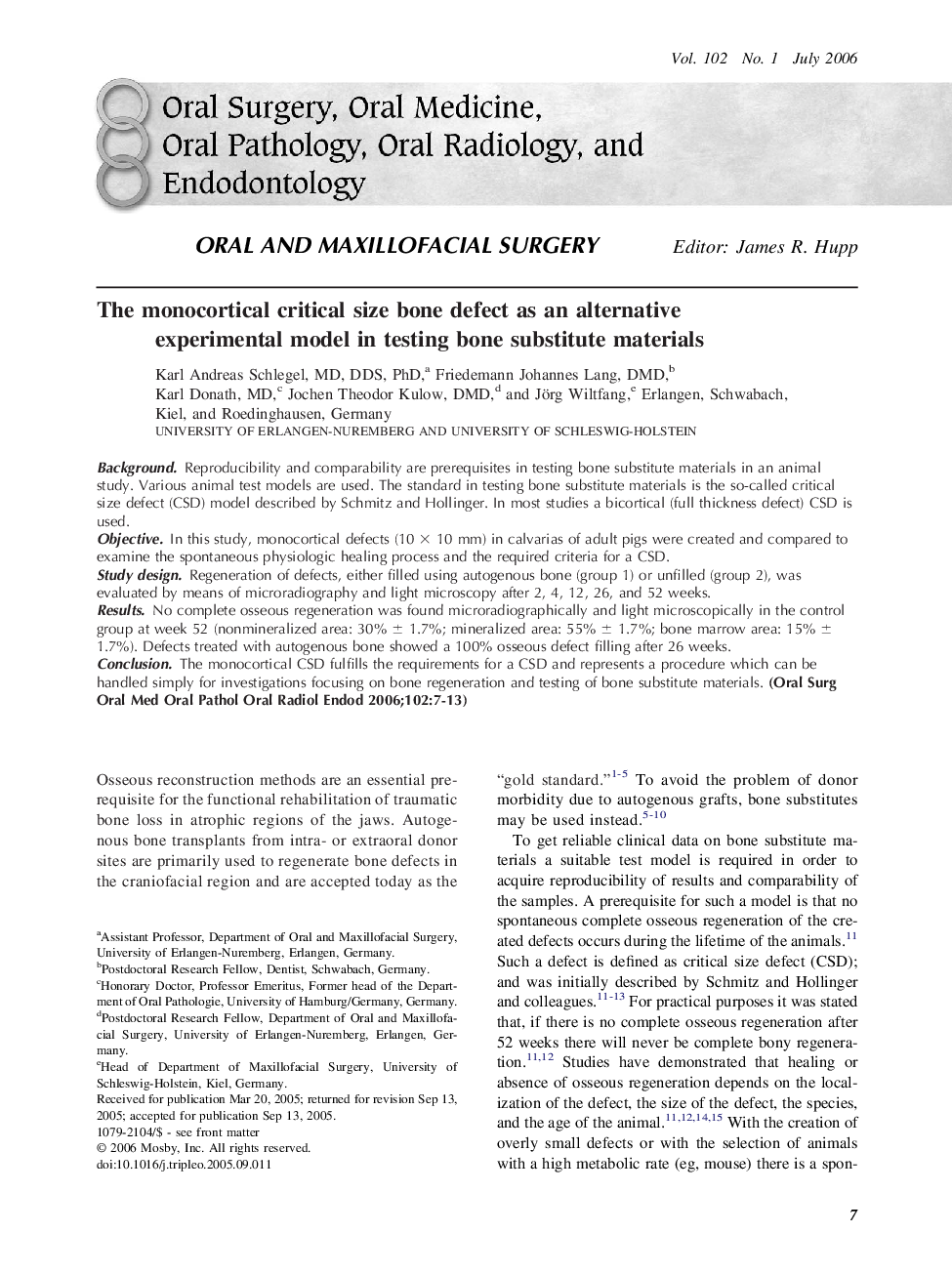| Article ID | Journal | Published Year | Pages | File Type |
|---|---|---|---|---|
| 3169839 | Oral Surgery, Oral Medicine, Oral Pathology, Oral Radiology, and Endodontology | 2006 | 7 Pages |
BackgroundReproducibility and comparability are prerequisites in testing bone substitute materials in an animal study. Various animal test models are used. The standard in testing bone substitute materials is the so-called critical size defect (CSD) model described by Schmitz and Hollinger. In most studies a bicortical (full thickness defect) CSD is used.ObjectiveIn this study, monocortical defects (10 × 10 mm) in calvarias of adult pigs were created and compared to examine the spontaneous physiologic healing process and the required criteria for a CSD.Study designRegeneration of defects, either filled using autogenous bone (group 1) or unfilled (group 2), was evaluated by means of microradiography and light microscopy after 2, 4, 12, 26, and 52 weeks.ResultsNo complete osseous regeneration was found microradiographically and light microscopically in the control group at week 52 (nonmineralized area: 30% ± 1.7%; mineralized area: 55% ± 1.7%; bone marrow area: 15% ± 1.7%). Defects treated with autogenous bone showed a 100% osseous defect filling after 26 weeks.ConclusionThe monocortical CSD fulfills the requirements for a CSD and represents a procedure which can be handled simply for investigations focusing on bone regeneration and testing of bone substitute materials.
